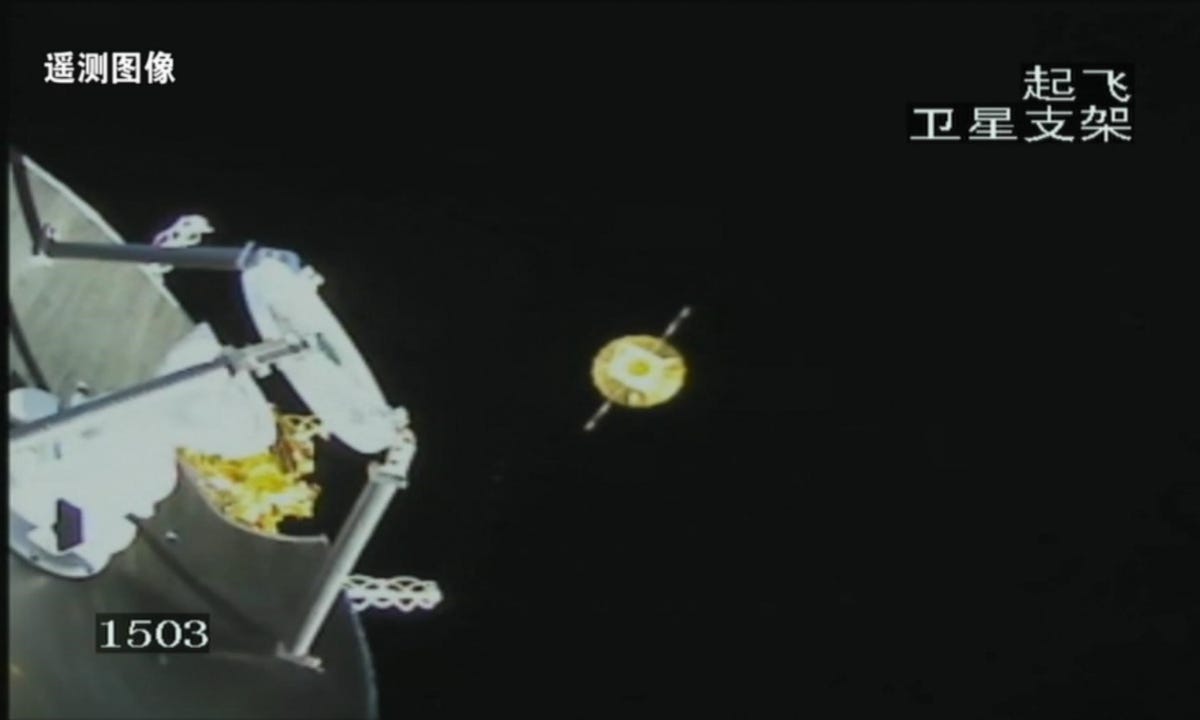In Space with Indonesia, Possibly India
China is looking to broaden its cooperation in space.

In the days following a meeting between China’s Foreign Minister Wang Yi (王毅) and Indonesia’s Luhut Binsar Pandjaitan, Chair of the National Economic Council, which is said to have deepened cooperation between the two nations, STAR.VISION announced it would lead the development of Indonesia’s first hyperspectral satellite.
The satellite, called Lampung-1 and named after the Indonesian province of the same name, will utilize hyperspectral imaging to provide insights into agricultural productivity, support efforts against illegal fishing, and monitor environmental changes. Through the imaging, Lampung-1 is expected to capture detailed spectral data for understanding crop health, soil conditions, and marine environments across Indonesia’s many islands.
STAR.VISION’s announcement of the satellite stated that agriculture makes up approximately 12.5 percent of the Indonesian gross domestic product (GDP) and employs 29 percent of the country’s workforce. As such, Lampung-1 will support Indonesian food security, growth, and tens of millions of jobs.
STAR.VISION added that they are partnering with Indonesia’s National Research and Innovation Agency (Badan Riset dan Inovasi Nasional), a major government-led scientific agency in Indonesia, for Lampung-1. The scientific agency may also take ownership of the satellite once it is confirmed to be healthy in space.
A development timeline for Lampung-1 has not been announced yet. Depending on the size of the spacecraft, the satellite could be in space within several months or following a few years.
Lampung-1 is not the first time Indonesia is working with China in space, with the Long March 3B/E launch vehicle carrying two Palapa satellites toward geostationary orbit a few years ago, and with nineteen satellites being ordered from the Shanghai-based Innovation Academy for Microsatellites of the Chinese Academy of Science (中国科学院微小卫星创新研究院) for imaging in a variety of spectrums and via various methods.
Alongside developing a satellite with Indonesia, China is looking to cooperate with India in space, with Jatan Mehta writing the following from the Global Space Exploration Conference 2025:
China formally welcomed India to cooperate on Moon missions. Wu Weiren, the Chief Designer of China’s extremely successful Chang’e lunar exploration program as well as the Director General of China’s Deep Space Exploration Laboratory (DSEL), said during a panel of various national space agency heads that China “especially welcomes India to participate in cooperating and collaborating on the ILRS” Moonbase project. Considering the not-so-great relations between China and India, and their mutual space activities being nearly nil, China’s invitation can be interpreted to be likely a formality. Nevertheless, it’s good to have the invitation explicitly said than not. During the same panel, Weiren also stated:
“The Moon belongs to all human beings. Therefore we welcome all scientists in the world to participate into the ILRS. [...] We welcome international cooperation on our deep space exploration missions. Every country can apply.”
As Jatan mentions, China-India relations are strained due to border disputes, trade imbalances, and China's staunch support for Pakistan. However in recent months, relations between the two countries have been improving and slowly thawing.
With the statement by Wu Weiren (吴伟仁), China would likely like India to join the International Lunar Research Station, as both countries have robotic and crewed lunar programs underway. If India does join the lunar research station, it would be the second country, after Thailand, to be part of both Chinese and American (with the Artemis Accords1) lunar initiatives.
In a potential indication of what China-India space cooperation could be, the Deep Space Exploration Laboratory shared on May 19th that the Queqiao-2 lunar relay satellite, launched back in March 2024, is planned to support future Chinese and international lunar missions. It’s unknown what countries are looking to utilize the Queuqiao-2 satellite, but India, Japan, Russia, and the European Space Agency are all planning several robotic lunar missions in the next decade.
A difference between the International Lunar Research Station and the Artemis Accords is in plans. The Artemis Accords aims to establish a new agreement on space resources, overwriting the Outer Space Treaty. Meanwhile, the International Lunar Research Station aims to establish, as the name states, a research laboratory on and around the Moon, akin to conducting the International Space Station project in lunar space.


